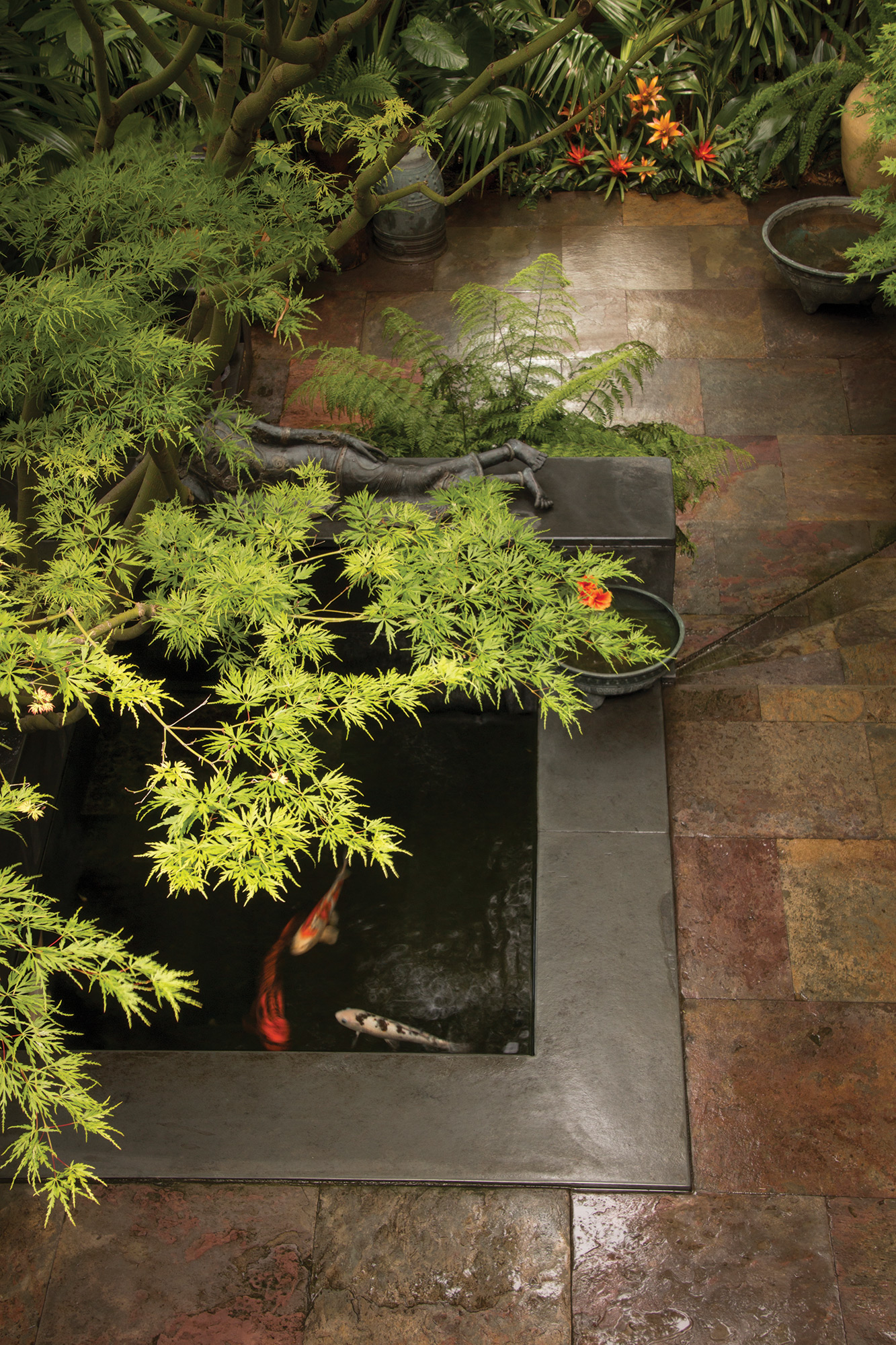
12 Mar Designing the West: Cultivated by Nature
A summer lawn mowing job fostered Davis Dalbok’s early love of the natural world. “When I was 7 and 8 years old, I cut the grass for our neighbors and became fascinated with the plant kingdom,” says Dalbok, founder and principal designer of Living Green Design, a San Francisco, California-based landscape architecture firm. “My mother encouraged me, and I began learning about horticulture on my own. By the time I was 12 years old, I was attending American Orchid Society meetings.”
Dalbok later studied landscape architecture at Cal Poly in San Luis Obispo, California, and spent summer vacations in neighboring Santa Barbara, where he worked for a nursery delivering plants to large estates.
“The whole region is a great horticultural world, and that exposure was an awakening that led me to design exotic gardens,” he says, noting he has designed everything from the classic flower garden to simple outdoor spaces for modernist homes and formal Japanese gardens. “As people started seeing my work and referring me, one thing led to another.”
He moved to San Francisco in the 1980s and landed a job installing interior plants for a company in the San Francisco Design Center, where he later opened his own showroom. After moving several times over the ensuing decades, Living Green Design settled in its current location in the Bayview neighborhood near the waterfront.
Headquartered in a large conservatory open to both trade professionals and the public, the showroom is filled inside and out with specimen plants, sculptures, artifacts, antiques and architectural elements, such as gates, doors, water features and other unusual objects.
The firm designs, installs and maintains exterior and interior landscapes and gardens for both residential and commercial clients, many of whom are located in Northern California, Palm Springs and Hawaii.
Dalbok compares designing landscapes to creating interior spaces. “Many of the principles are similar,” he says. “I think about the composition of the garden, as well as the scale and form.”
Color is also paramount to a landscape’s success, he explains. Some people don’t like red, for instance, so Dalbok might choose a palette of yellows, oranges and apricots instead. “One of the first questions I ask a client is, ‘What are your favorite colors?’”
The landscape architect also considers how the garden will function. He will bring in furniture if the clients will dine or lounge there, or if the space will be used in winter, he will include a fire pit. He also narrows things down to the specifics — what are the clients’ favorite plants? Do they like fragrant flowers? And finally, he asks what the garden of their dreams would look like.
“I try to get my clients to think big at the outset,” Dalbok says.
He enjoys the challenge of pairing unusual plants, like a Japanese maple in a subtropical garden, for example. “Plants grow and change and respond differently, depending on the season; a garden is always shifting,” he says. “I like a garden that has movement with things along the way to delight the eye. My goal is to create an ease in the viewer’s subconscious.”
Margaret and Gene McCoy worked with Dalbok to create an interior garden for their home at the Presidio Gate in San Francisco. Enclosed with glass as an architectural detail in their home, the intimate space features uncommon plants such as timber bamboo, flowering bromeliads and Rhapis palms.
“We’ve been working with Davis for 35 years, and he has an encyclopedic knowledge,” Margaret says. “With his architectural eye, he can look at a space and visualize the plants, furniture, accessories and container gardens. He has helped me make beautiful decisions both inside and out; there is not a room or space in our home he hasn’t touched.”
Dalbok frequently travels to his verdant retreat and second home, Hale Mohalu, on the Big Island of Hawaii. He bought the 24-acre property in the late ’80s, and has been working on it ever since. The guesthouse is available for vacation rentals, and visitors can help themselves to a veritable Eden of fresh bananas, papayas, lychees, limes, oranges and guavas growing on the property’s grounds.
“Gardening in Hawaii unleashes my tropical inner self,” Dalbok says. “It’s my place to get away and be ultra-creative. Of course, it’s still a work in progress — as all gardens are.”
WA&A wants to know…
Landscape architect and entrepreneur Davis Dalbok shares some of his favorite gardening tips, inspirations and sources.
Q: What are some of your favorite plants right now?
A: I love Vireya rhododendrons. They come in many beautiful colors and bloom three to four times a year. I have them in my gardens in California and Hawaii. I’ve always loved orchids, too. We grow cold-hardy varieties in Marin County. In Hawaii, we have thousands of orchids, and they’re so easy to propagate; we’ll just hang one on a tree, and it roots on and starts growing.
Q: What’s the biggest mistake homeowners make in their gardens?
A: Some people who love to garden have trouble because they don’t do enough research to find out what a plant needs. It’s important to know not just how to help a plant survive, but what it needs to truly thrive — from soil to water to sunlight to fertilizer and pruning. Find a professional who knows those answers, and you’re much more likely to have a successful outcome.
Q: Name one of your landscape style icons.
A: Roberto Burle Marx was a renowned landscape architect from Brazil known for his curvilinear designs and use of native plants in broad strokes in public places.
Q: Your showroom features wonderful antiques and artifacts. What’s your favorite source for architectural salvage and vintage pieces?
A: Big Daddy’s Antiques always has great stuff for interiors and gardens. They get really unusual pieces, and you never know what you’ll find when you go to their store.
Q: Describe one of your favorite possessions.
A: We source a lot of spiritual artifacts, and I found a beautiful, life-sized white marble Buddha statue that stands in my living room. Whenever I walk in the room, I feel a great sense of peace.
Q: What are some of your favorite Bay Area eateries?
A: Zuni Café in San Francisco is such a great place for enjoying amazing food and meeting people. The Commissary in the Presidio has terrific Spanish-influenced cuisine. I live in Marin County, and our go-to restaurant for casual Mediterranean is Insalata’s in San Anselmo.
- An assortment of unique flora and tropical plants enliven the designer’s second home, Hale Mohalu, in Hawaii. From a Dendrobium spectabile orchid to a variegated Dracaena Song of India and a rhododendron “Harry Wu,” the depth of Dalbok’s knowledge of plants results in a vivid display of lush greenery with pops of color. Photos: Doreen Wynja
- An assortment of unique flora and tropical plants enliven the designer’s second home, Hale Mohalu, in Hawaii. From a Dendrobium spectabile orchid to a variegated Dracaena Song of India and a rhododendron “Harry Wu,” the depth of Dalbok’s knowledge of plants results in a vivid display of lush greenery with pops of color. Photos: Doreen Wynja
- An assortment of unique flora and tropical plants enliven the designer’s second home, Hale Mohalu, in Hawaii. From a Dendrobium spectabile orchid to a variegated Dracaena Song of India and a rhododendron “Harry Wu,” the depth of Dalbok’s knowledge of plants results in a vivid display of lush greenery with pops of color. Photos: Doreen Wynja
- An assortment of unique flora and tropical plants enliven the designer’s second home, Hale Mohalu, in Hawaii. From a Dendrobium spectabile orchid to a variegated Dracaena Song of India and a rhododendron “Harry Wu,” the depth of Dalbok’s knowledge of plants results in a vivid display of lush greenery with pops of color. Photos: Doreen Wynja
- An assortment of unique flora and tropical plants enliven the designer’s second home, Hale Mohalu, in Hawaii. From a Dendrobium spectabile orchid to a variegated Dracaena Song of India and a rhododendron “Harry Wu,” the depth of Dalbok’s knowledge of plants results in a vivid display of lush greenery with pops of color. Photos: Doreen Wynja
- An assortment of unique flora and tropical plants enliven the designer’s second home, Hale Mohalu, in Hawaii. From a Dendrobium spectabile orchid to a variegated Dracaena Song of India and a rhododendron “Harry Wu,” the depth of Dalbok’s knowledge of plants results in a vivid display of lush greenery with pops of color. Photos: Doreen Wynja
- An assortment of unique flora and tropical plants enliven the designer’s second home, Hale Mohalu, in Hawaii. From a Dendrobium spectabile orchid to a variegated Dracaena Song of India and a rhododendron “Harry Wu,” the depth of Dalbok’s knowledge of plants results in a vivid display of lush greenery with pops of color. Photos: Doreen Wynja
- An assortment of unique flora and tropical plants enliven the designer’s second home, Hale Mohalu, in Hawaii. From a Dendrobium spectabile orchid to a variegated Dracaena Song of India and a rhododendron “Harry Wu,” the depth of Dalbok’s knowledge of plants results in a vivid display of lush greenery with pops of color. Photos: Doreen Wynja
- An assortment of unique flora and tropical plants enliven the designer’s second home, Hale Mohalu, in Hawaii. From a Dendrobium spectabile orchid to a variegated Dracaena Song of India and a rhododendron “Harry Wu,” the depth of Dalbok’s knowledge of plants results in a vivid display of lush greenery with pops of color. Photos: Doreen Wynja
- Dalbok specified a rectilinear Arizona flagstaff paving pattern for the hardscape surrounding the pool. Plantings include Agave attenuata, orange Canna Tropicanna and purple Salvia leucantha. The blood-red flowering vine covering the cabana is Distictis buccinatoria.
- The company’s conservatory showroom features high ceilings and skylights that illuminate trees, plants, cacti, furnishings, light fixtures and artifacts like Buddha figures, scripture chests, crystals and more.
- Davis Dalbok
- An assortment of unique flora and tropical plants enliven the designer’s second home, Hale Mohalu, in Hawaii. From a Dendrobium spectabile orchid to a variegated Dracaena Song of India and a rhododendron “Harry Wu,” the depth of Dalbok’s knowledge of plants results in a vivid display of lush greenery with pops of color. Photos: Doreen Wynja
- A small palm garden features varieties like Brahea armata var. clara, Macrozamia communis, and Mediterranean fan palm.
- Living Green Design’s Brandon Pruett designed the green wall that graces the Emeryville Market food court. The living display is 40 by 8 feet and features a variety of tropical and subtropical plants in varying shades of green. “I love the wall’s curvilinear flow and sense of informal pattern,” Dalbok says.
- An assortment of unique flora and tropical plants enliven the designer’s second home, Hale Mohalu, in Hawaii. From a Dendrobium spectabile orchid to a variegated Dracaena Song of India and a rhododendron “Harry Wu,” the depth of Dalbok’s knowledge of plants results in a vivid display of lush greenery with pops of color. Photos: Doreen Wynja
- The palm-lined driveway leads to houses for staff and guests at the top of the property. Dalbok planted four distinct species of palms with two varieties alternating on each side for horticultural interest. Photo: Davis Dalbok
- Underwater Seascape, a ceramic sculpture by Marcia Donahue, includes tumbled glass and ceramic pieces at the base and blends in with the vegetation.





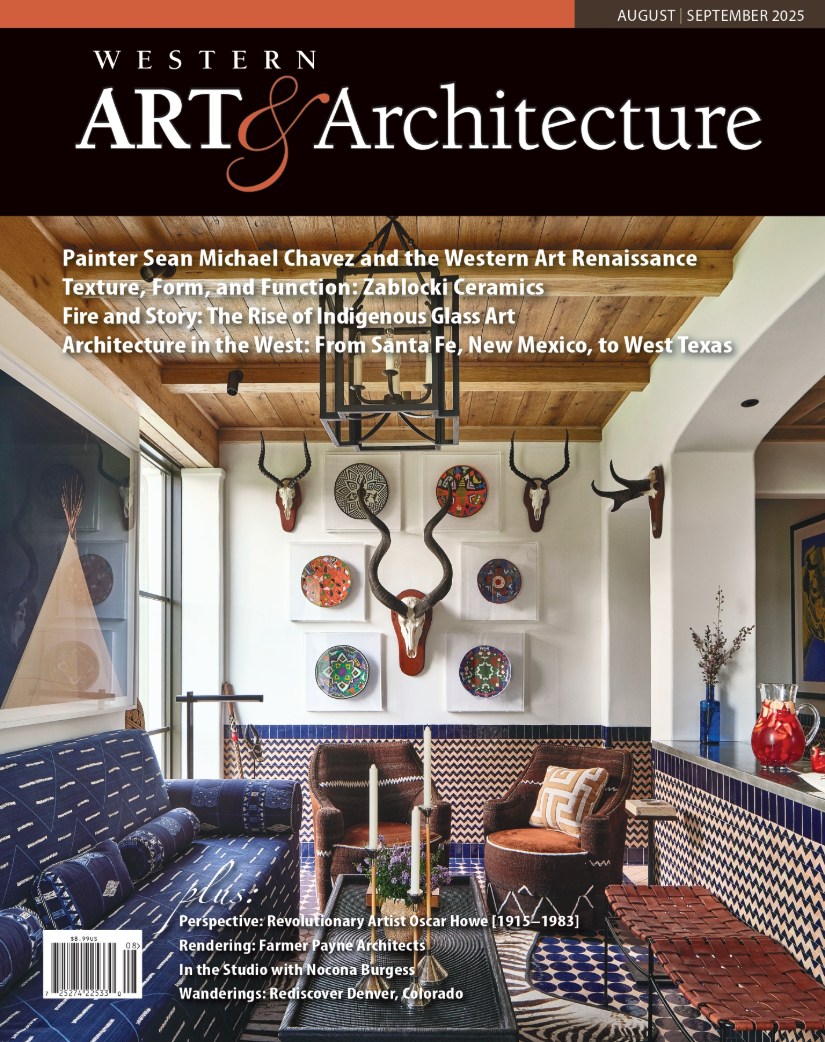
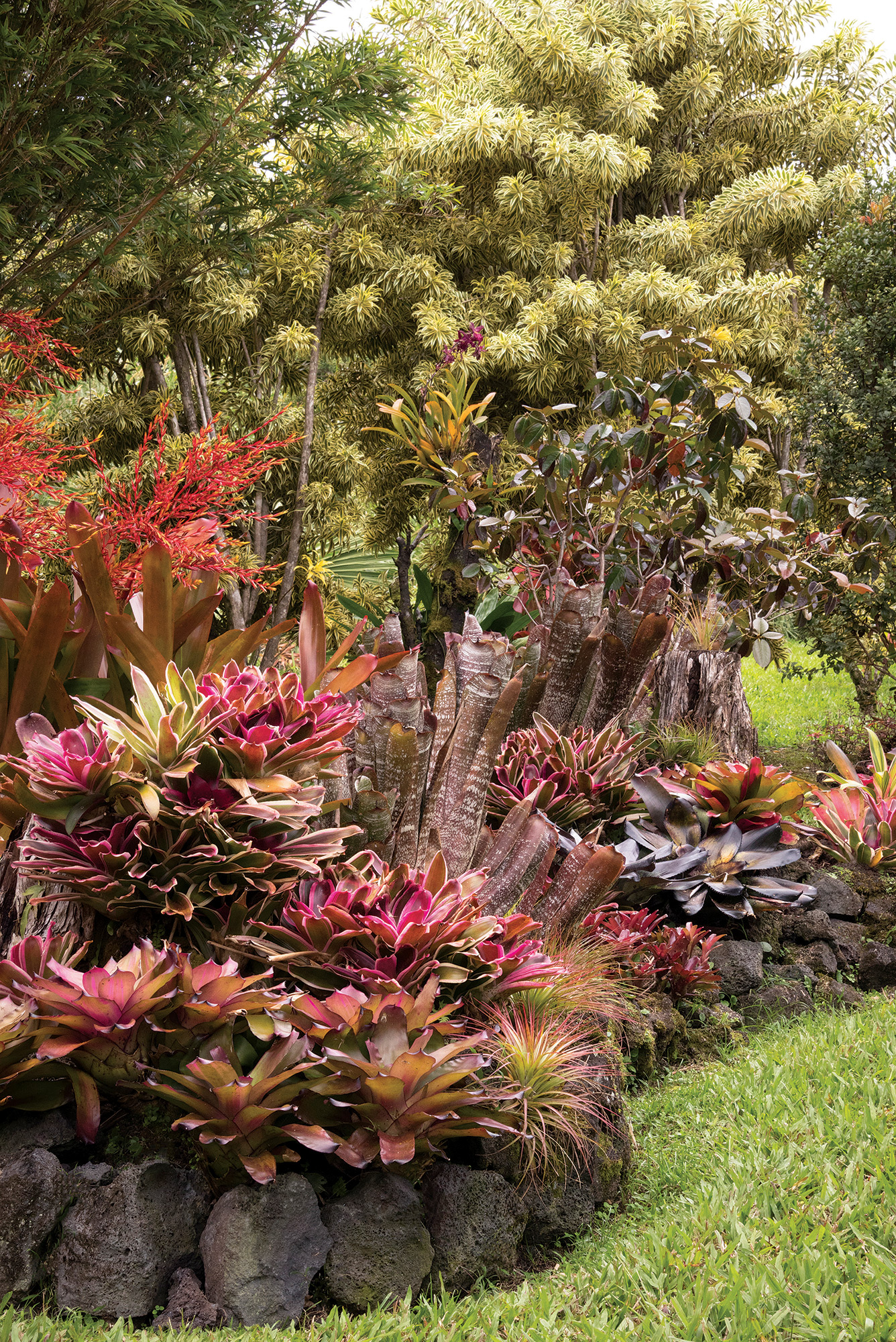
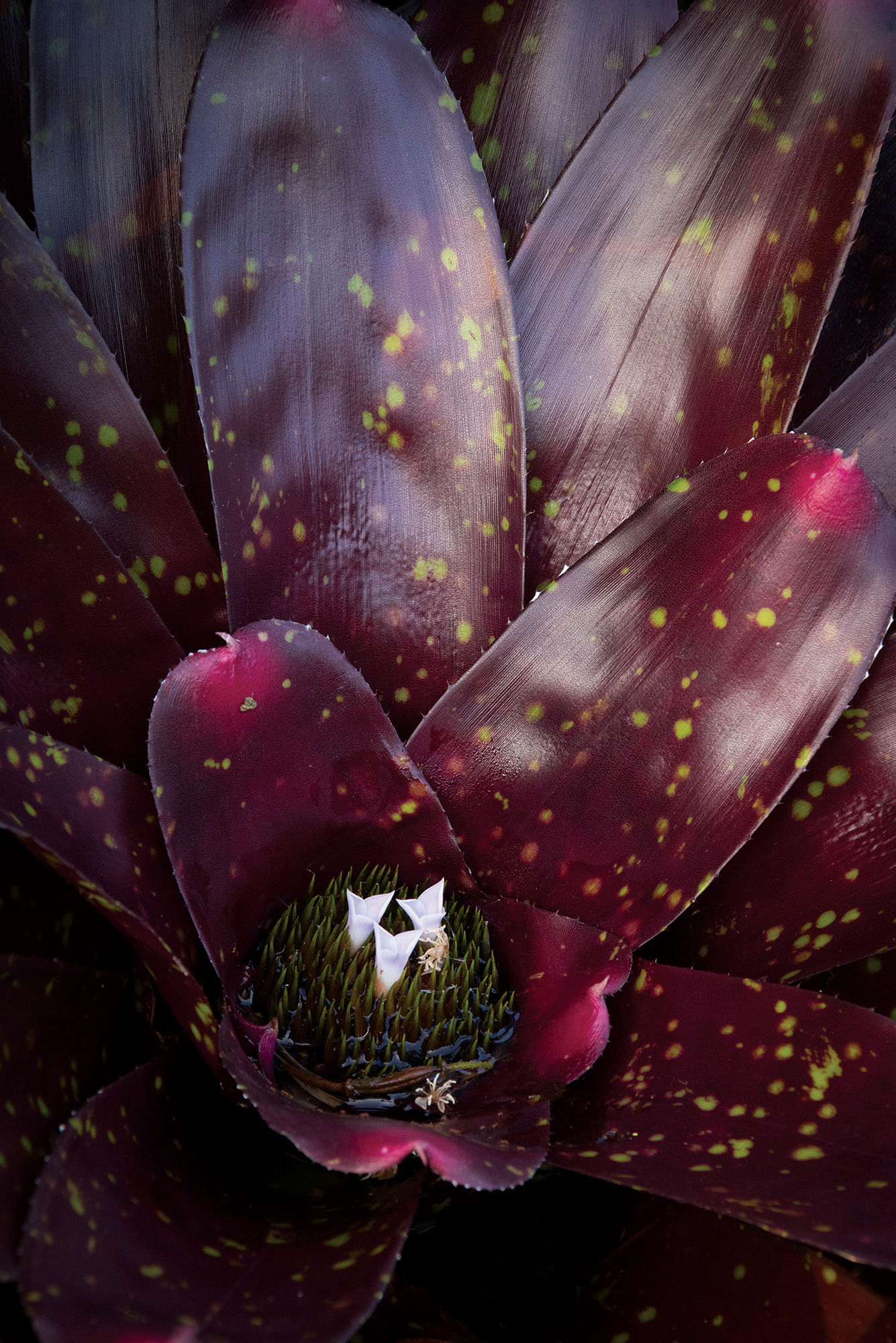
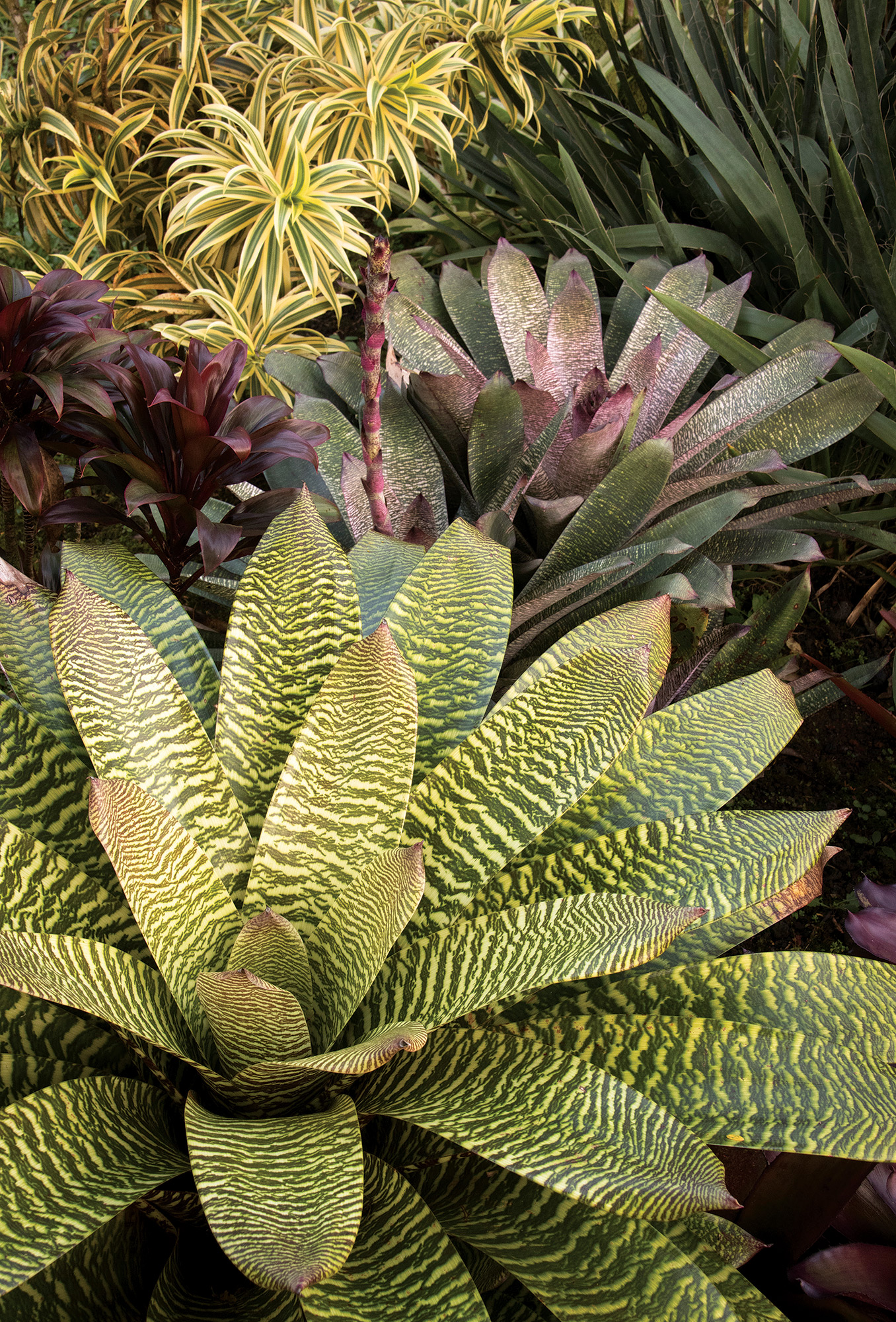
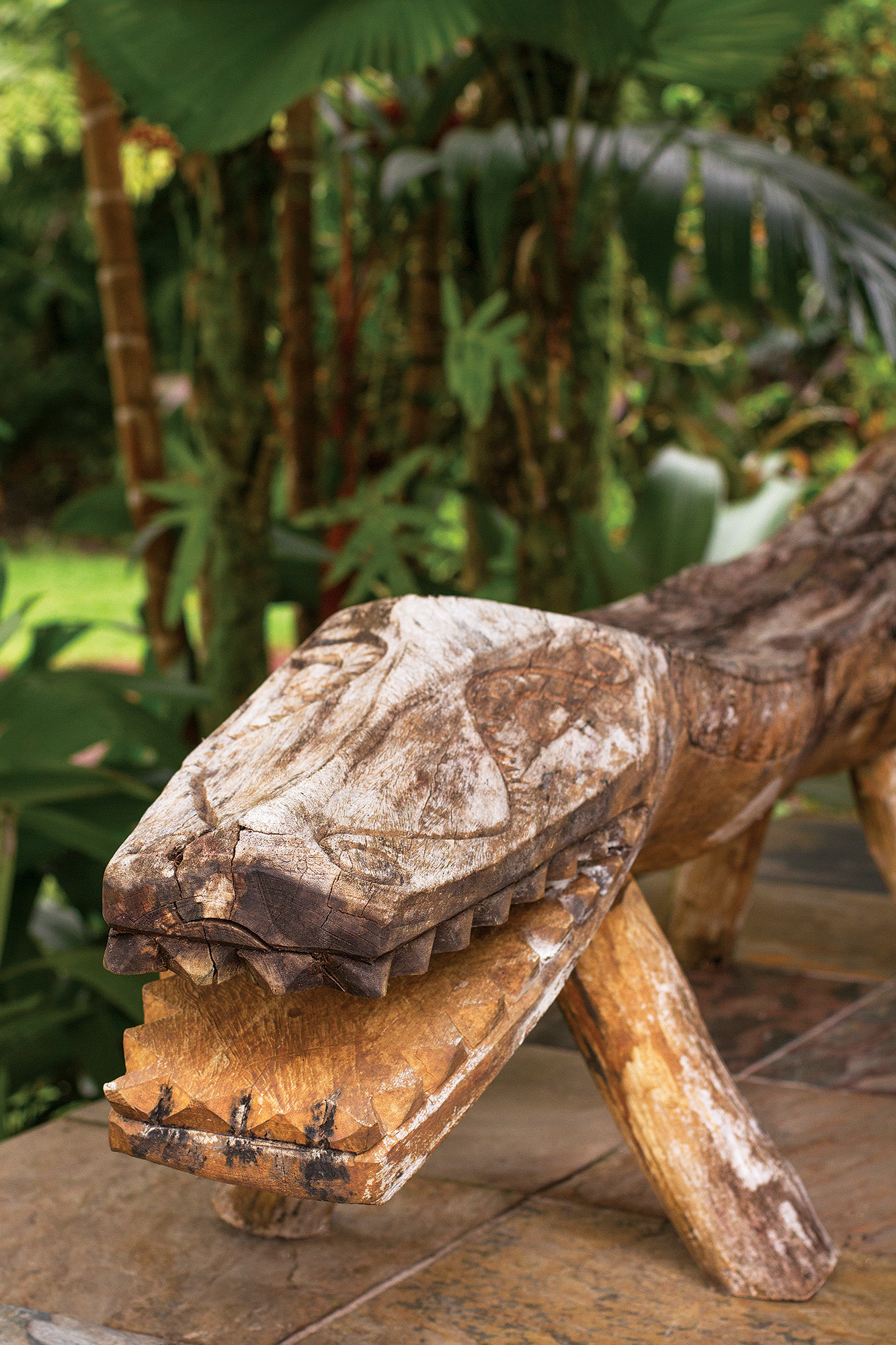
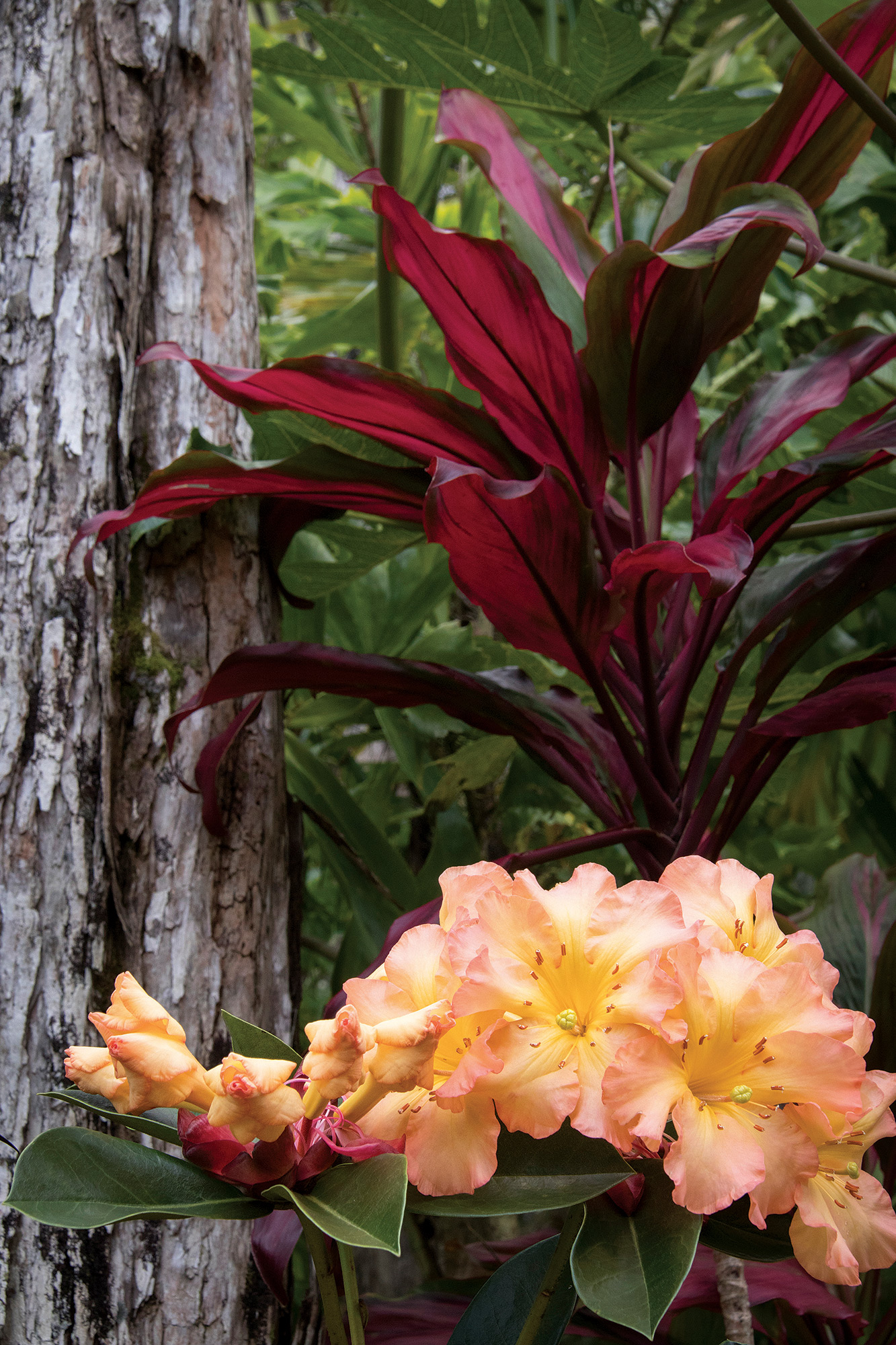
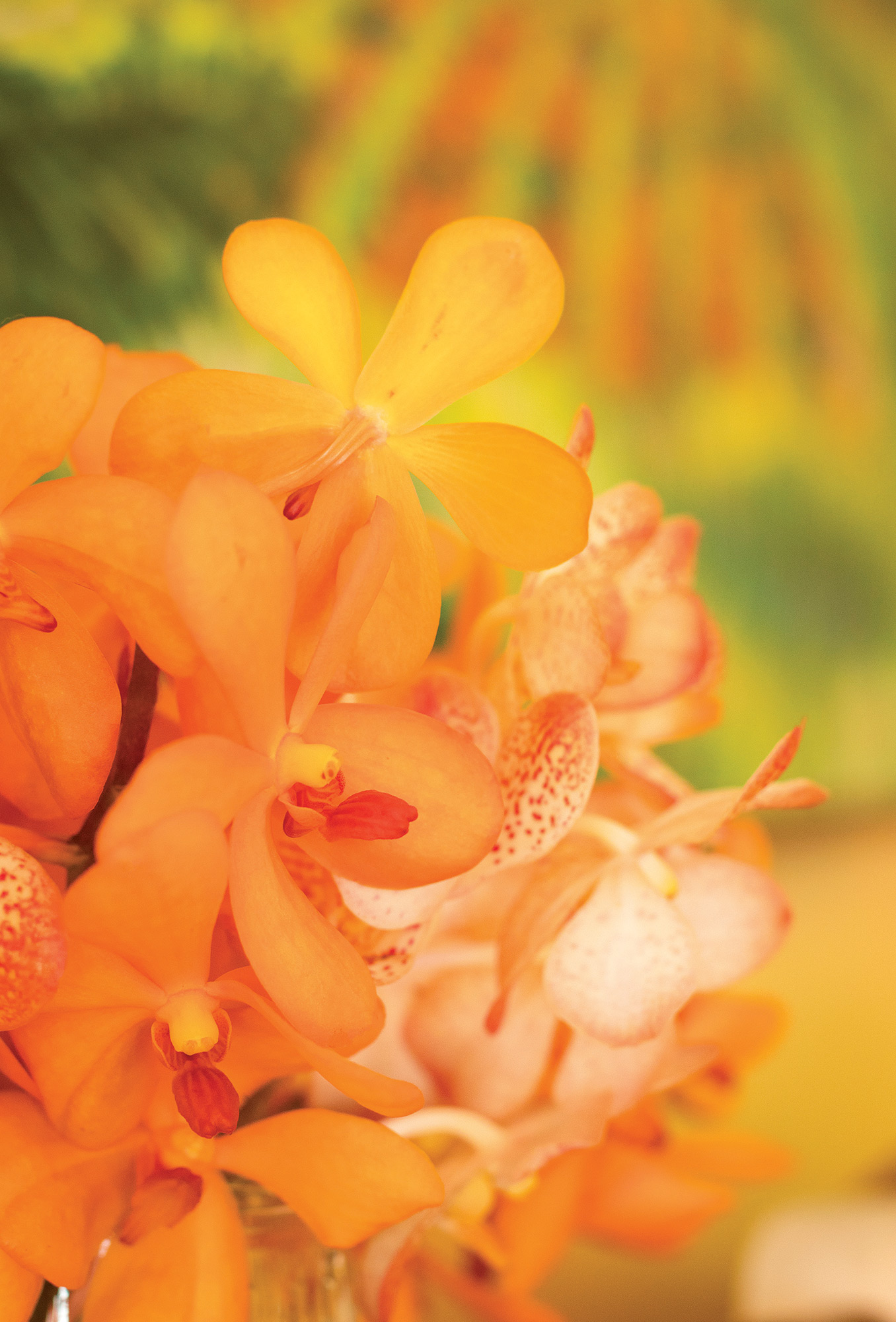

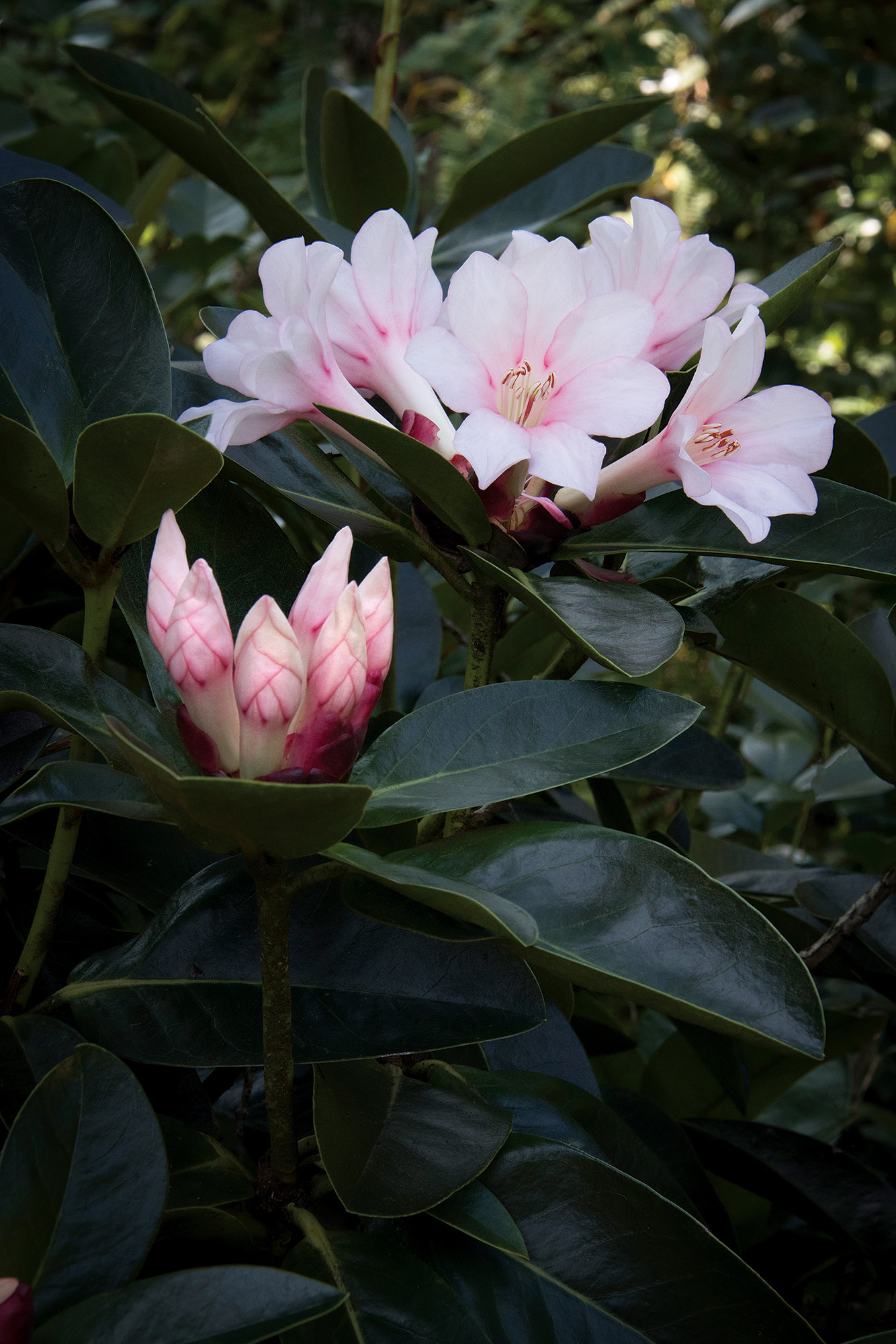

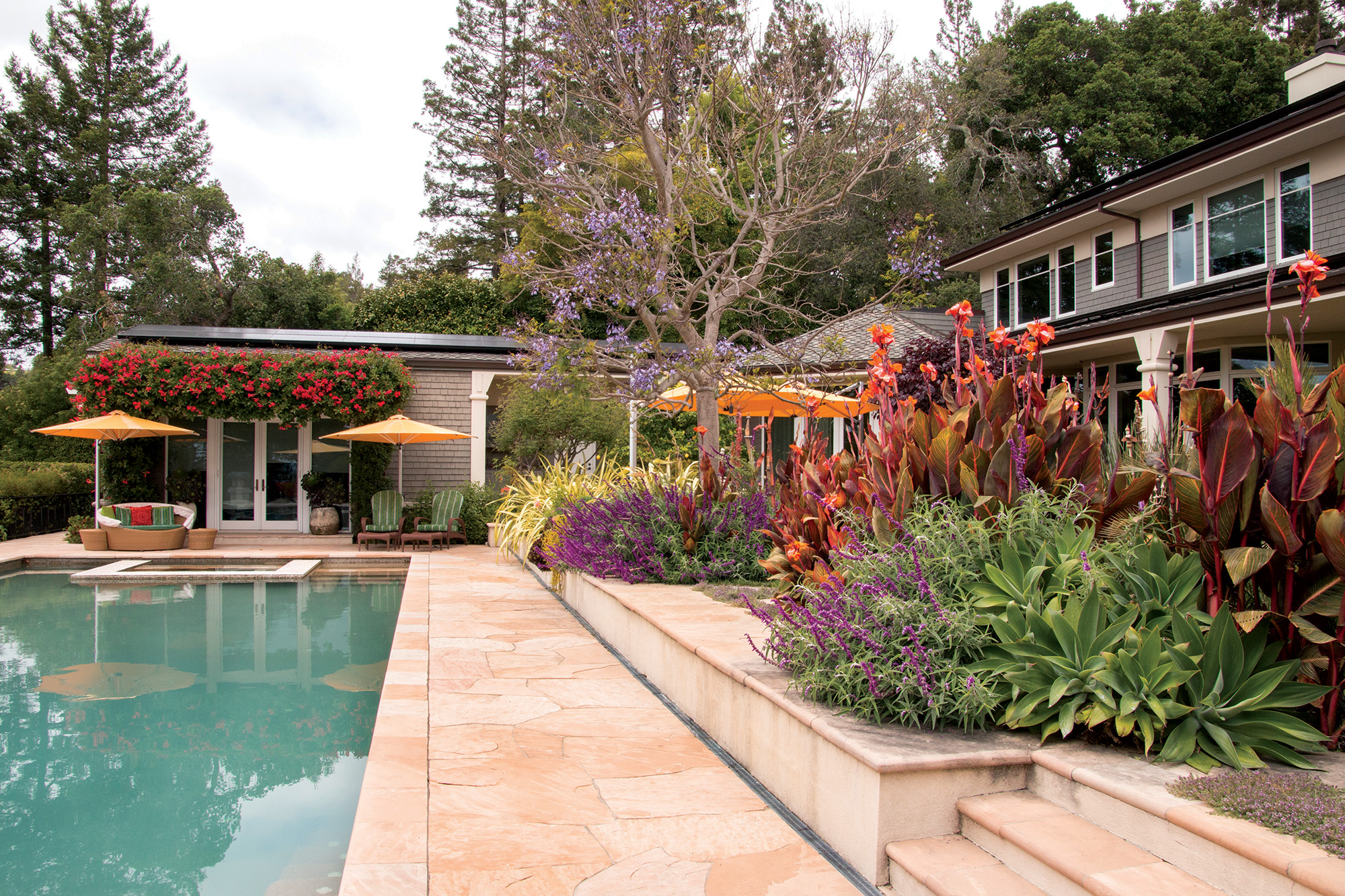
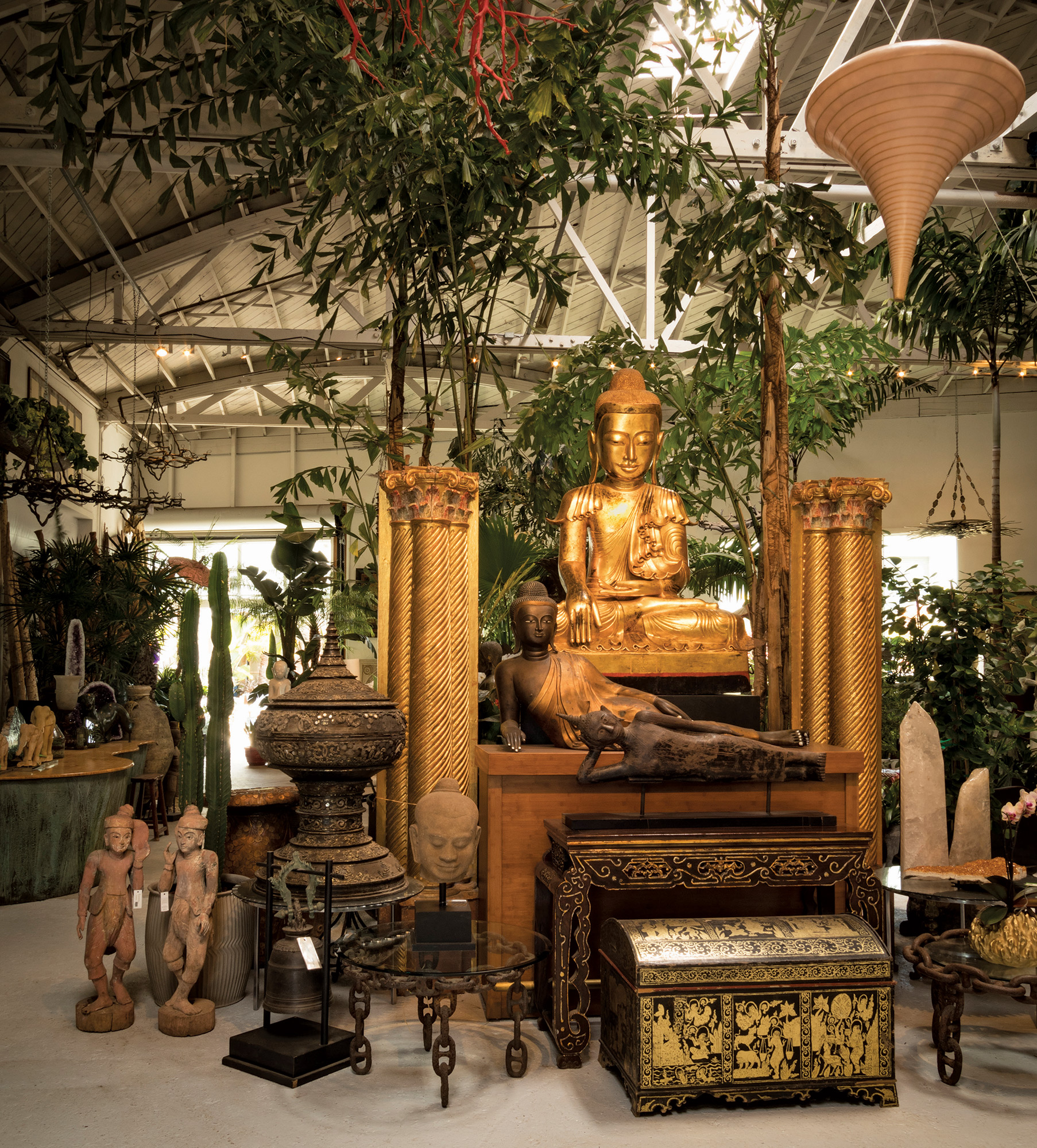

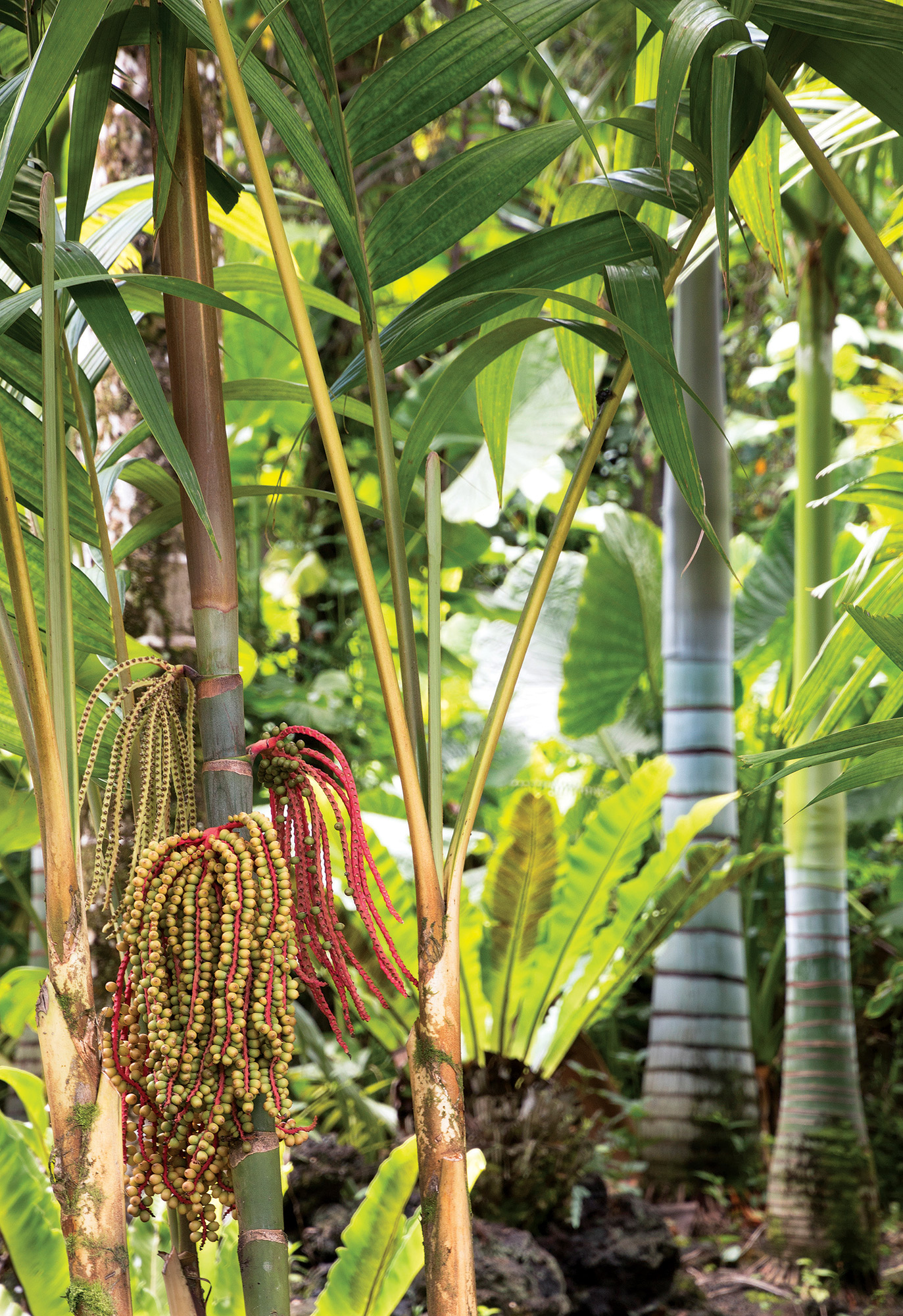
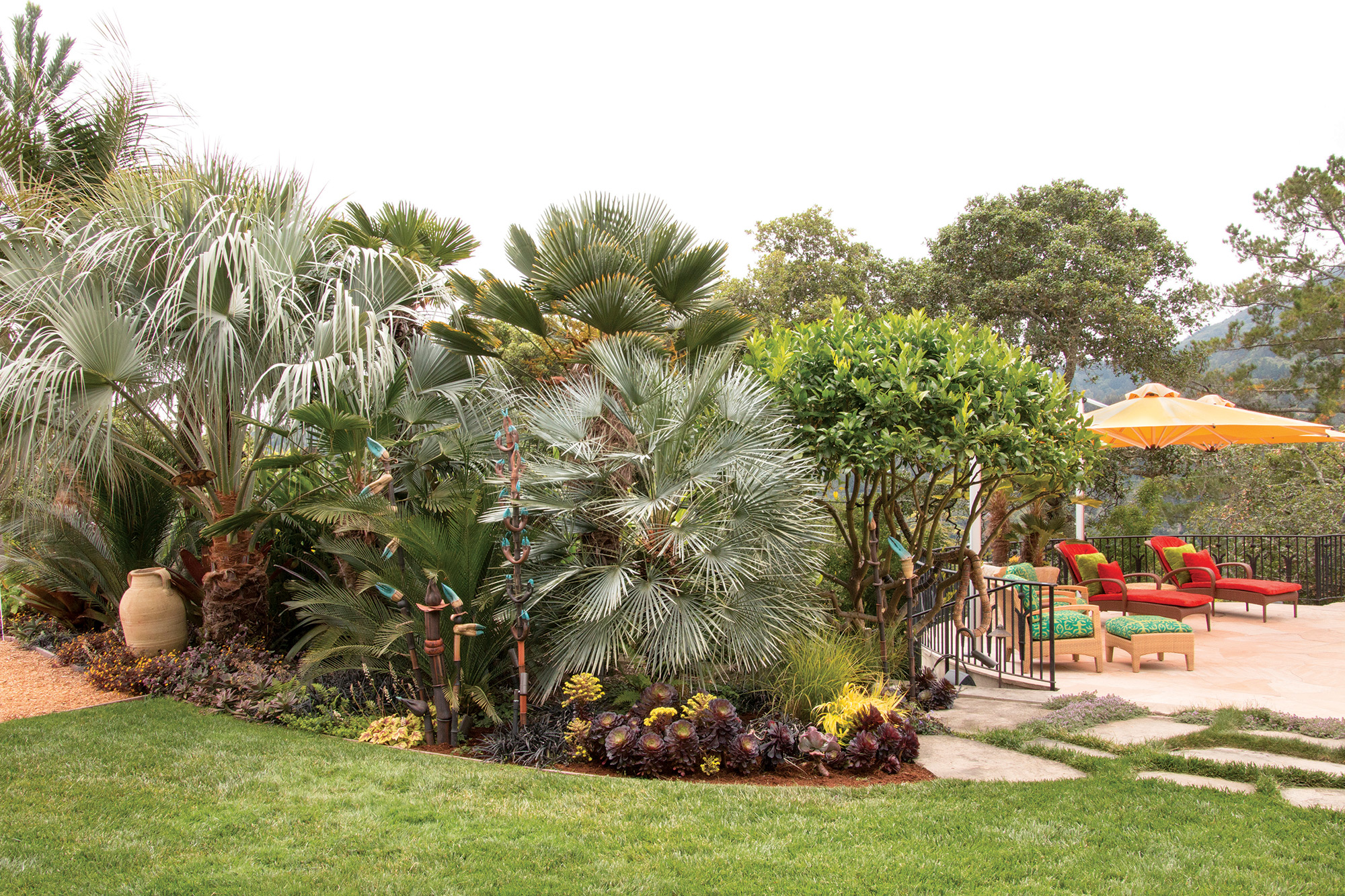

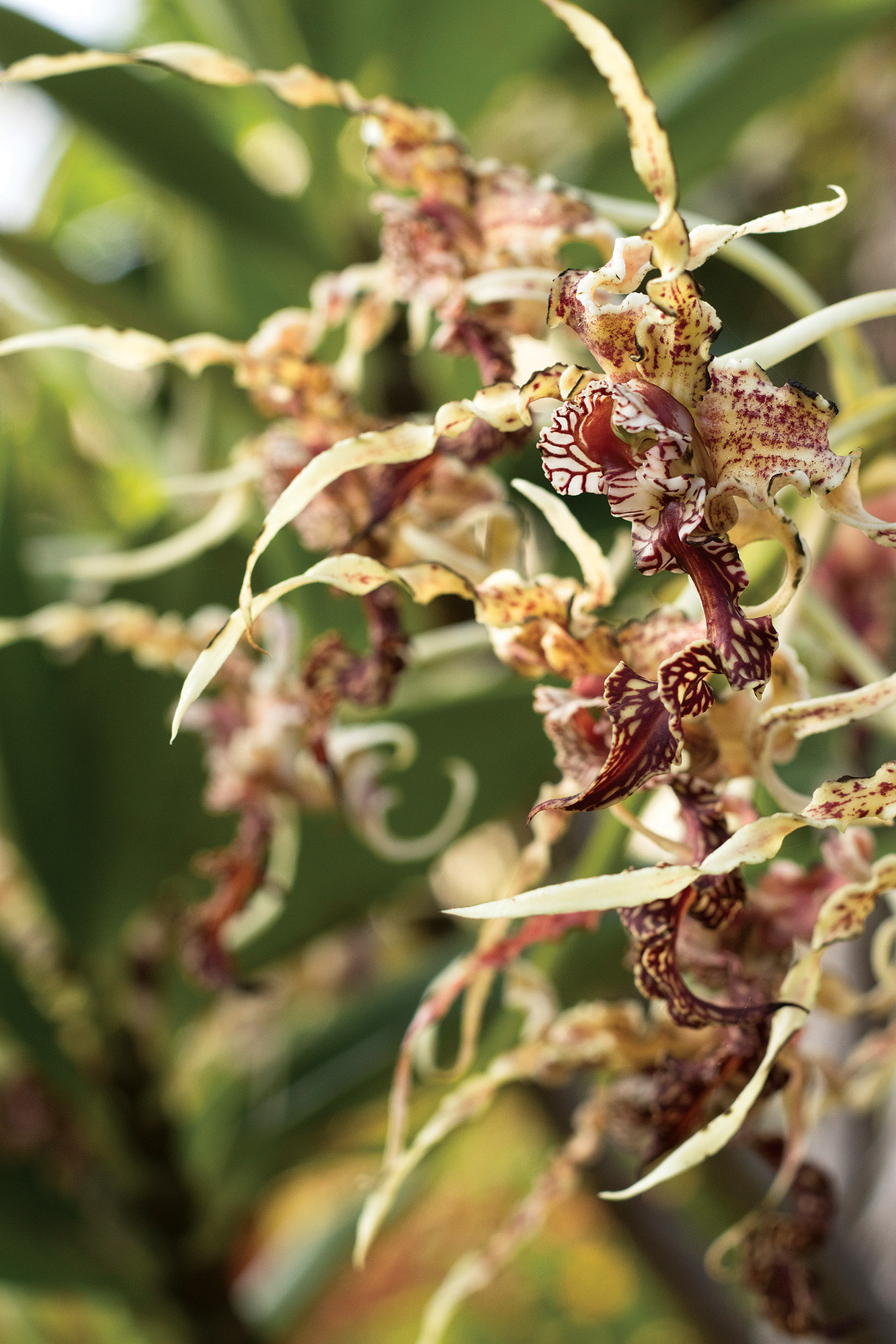
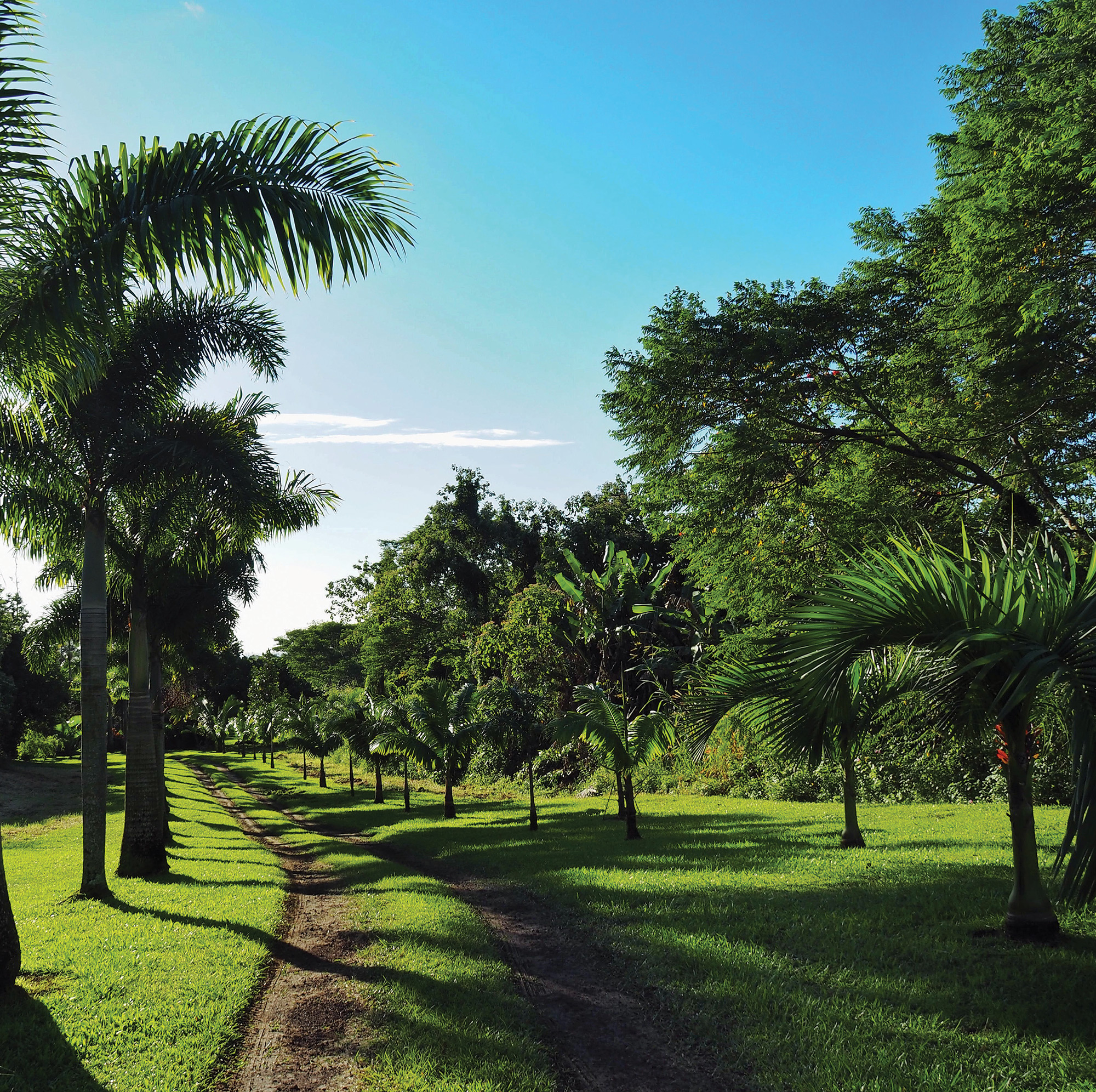
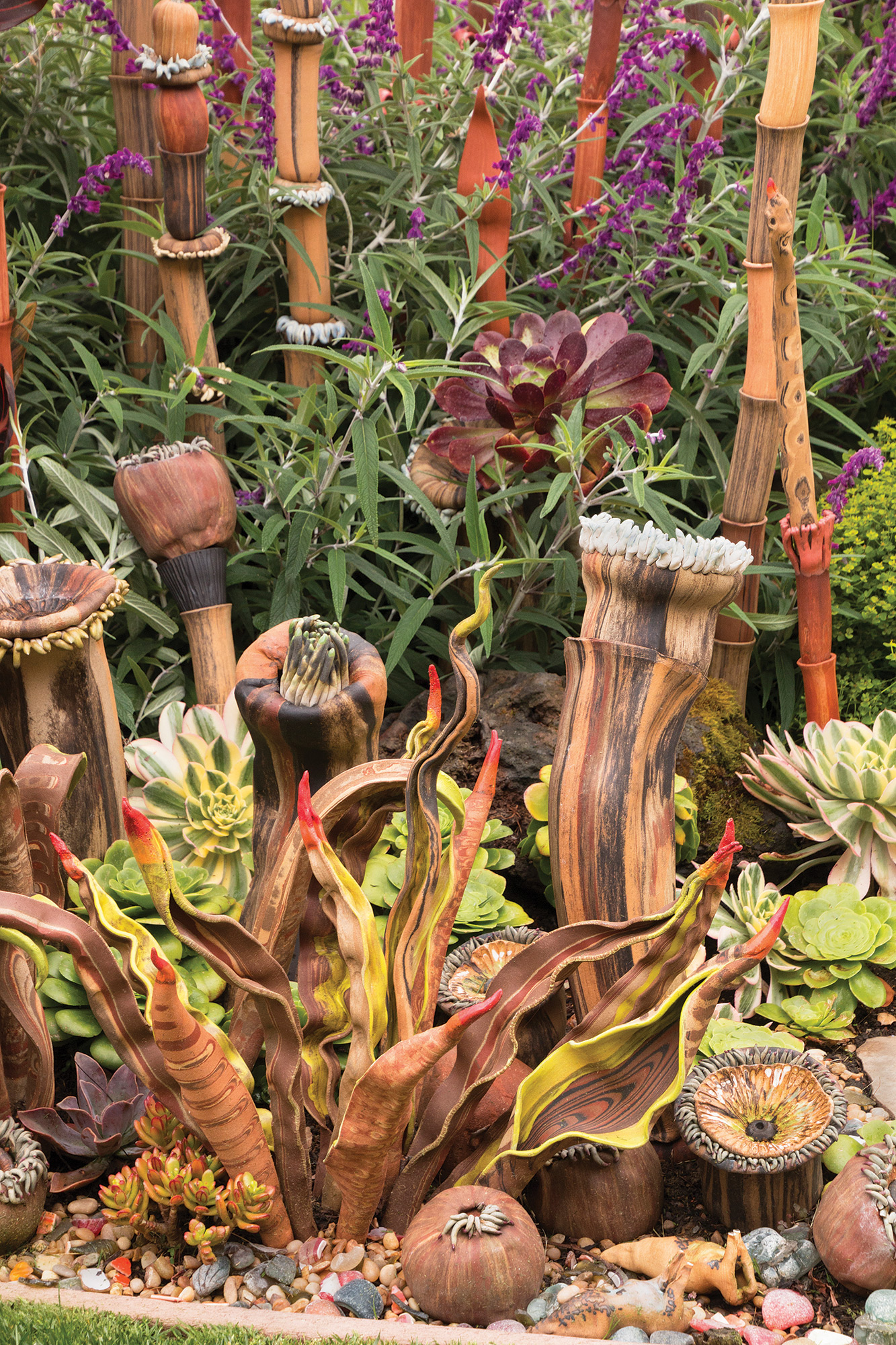
No Comments